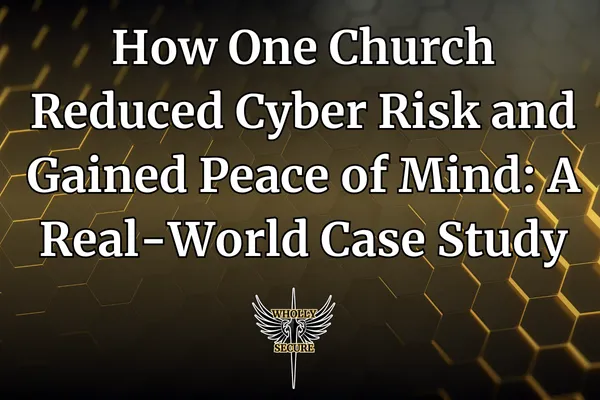
How One Church Reduced Cyber Risk and Gained Peace of Mind: A Real-World Case Study
How One Church Reduced Cyber Risk and Gained Peace of Mind: A Real-World Case Study
When it comes to cybersecurity, many churches and nonprofits know they need help — but don’t know where to start or who to trust. That’s why real stories matter. In this article, we’re sharing the journey of a faith-based organization that went from uncertainty to clarity with the help of a cybersecurity partner.
The Challenge: No Plan, No Oversight, Growing Risk
This organization had a small IT team but no formal cybersecurity plan. They relied on a church management system, used personal devices for email, and had never completed a compliance review.
They knew they were vulnerable but didn’t know how to measure their risk or where to begin. Their biggest concerns included:
Donor data security
Insurance compliance
Staff training and phishing prevention
Having a clear action plan in place
The Assessment: Understanding Where They Stood
The church began with a low-cost cybersecurity and compliance assessment. This included:
An inventory of their current systems
A review of policies (or lack thereof)
Evaluation of password practices, device security, and software updates
Interviews with IT staff and leadership
A basic compliance gap analysis
The result was a simple but eye-opening report: they had significant gaps that needed to be addressed quickly — but the steps were achievable.
The Roadmap: A Plan They Could Follow
Next, they worked with a cybersecurity partner to build a six-month roadmap. The roadmap focused on:
Password and account policy updates
Formalizing a basic incident response plan
Segmenting access to sensitive data
Beginning staff cybersecurity awareness training
Laying the groundwork for insurance and donor compliance
Because the church had a limited budget, the roadmap was phased and prioritized for the highest-risk issues first.
The Outcome: Less Risk, More Confidence
Within 90 days, the church had:
A formal cybersecurity and compliance plan
A clear training schedule for staff and volunteers
A documented and board-approved incident response plan
Improved insurance eligibility
Clear donor protection policies
A comprehensive cyber security compliance policy booklet
Ongoing compliance program
Most importantly, their leadership team reported feeling more confident and equipped to protect the trust of their community.
What This Means for You
You don’t have to overhaul everything at once. Start where you are. A cybersecurity partner doesn’t just throw jargon at you — they give you a plan that matches your reality.
If you want to understand your risk and get a clear roadmap like this church did, we’re here to help.